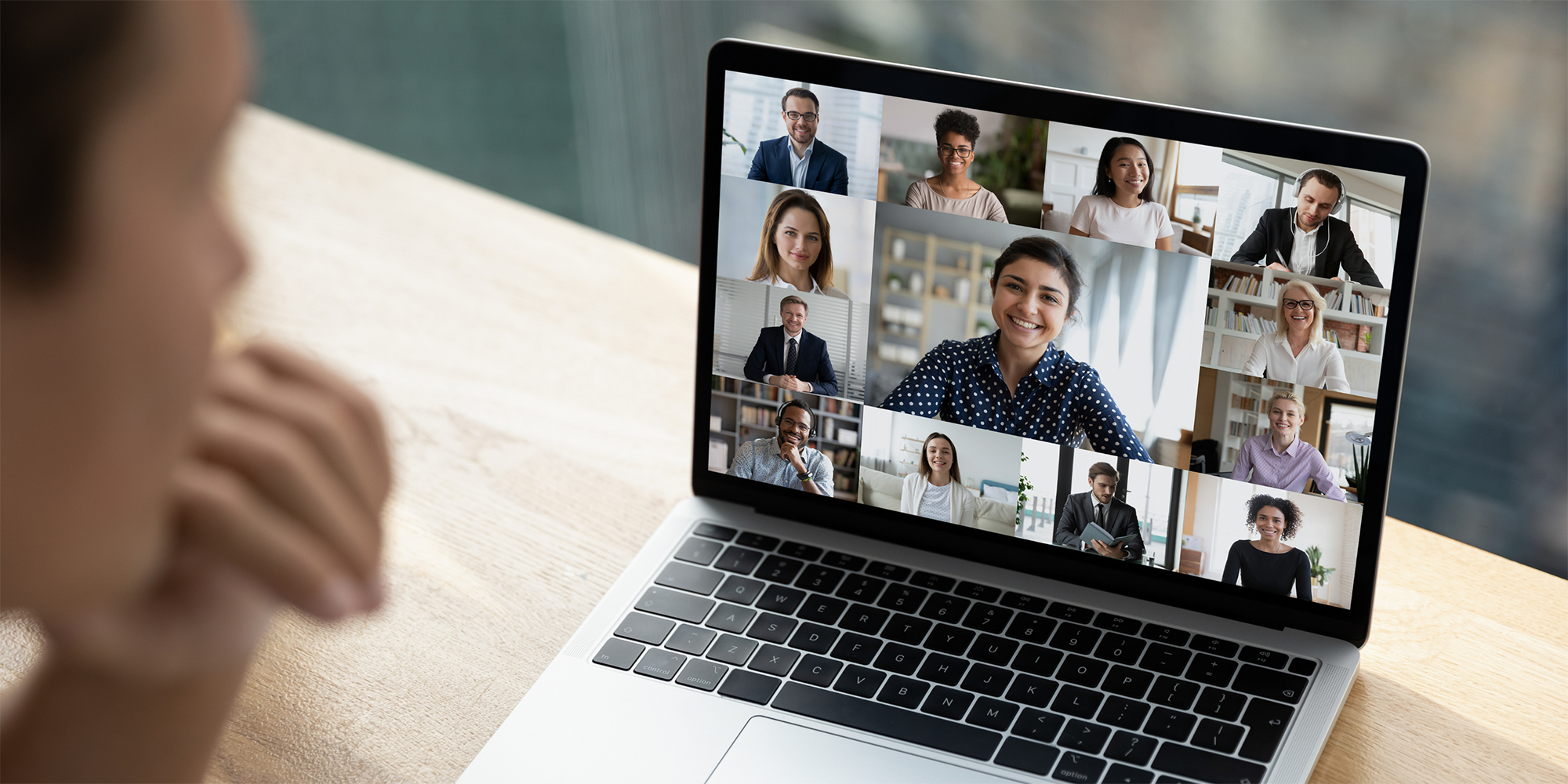Ready to dive headfirst into the deep end of adulting? Right, silly question. But guess what? You’re embarking on this journey in the middle of a remote revolution! Do you remember those days when our parents used to narrate tales of walking into offices with ties and shiny shoes? Ah, nostalgia. But our narrative? It’s more about Zoom backgrounds and Wi-Fi speeds. Welcome to entering the workforce in a remote era.
Contents
- 1 Decoding the Remote Lingo: It’s like College Slang, but Different!
- 2 PJ Bottoms & Formal Tops: The Yin-Yang of Remote Work Wardrobe
- 3 Digital Nomads & Coffee Shops: The New-age Wanderers
- 4 Networking: No Handshakes, Just Good Wi-Fi
- 5 The Art of the ‘Follow-Up’: The Professional Version of ‘Double Texting’
- 6 Dealing with ‘Zoombombing’: The Modern Day Photobomb
- 7 Work-Life Balance: Setting Boundaries
- 8 Continuous Learning: The Sequel to College
- 9 Final Remarks About Entering The Workforce In A Remote Era
- 10 FAQs About Working Remotely Post-Graduate
Decoding the Remote Lingo: It’s like College Slang, but Different!

Just as in college, where you had to navigate through the ever-evolving landscape of slang and buzzwords, the remote work environment has its own unique jargon. It’s a bit like learning a new language, and while you might not need a dictionary, understanding these terms can certainly make your remote work experience smoother. So, let’s delve into the world of remote work lingo, where “lit” and “fam” have been replaced with a whole new set of phrases. P.S. ‘Ping me’ no longer means a game of table tennis!
Synchronous and Asynchronous: In the remote work lexicon, you’ll frequently encounter the terms “synchronous” and “asynchronous.” Synchronous communication refers to real-time interactions, much like a traditional in-person meeting. Video conferences, phone calls, and instant messaging fall into this category. On the other hand, “asynchronous” tasks and communication occur without the need for immediate responses. Email, project management tools, and leaving comments on shared documents are excellent examples of asynchronous communication. Understanding when to use each mode can significantly impact your productivity and efficiency in a remote setting.
Slack: No, we’re not talking about being lazy; we’re referring to the popular messaging platform, Slack. It’s become the go-to tool for remote teams to communicate in real-time. You’ll often hear phrases like “Slack me the details” or “I’ll shoot you a Slack.” Essentially, it’s the modern water cooler for remote workers, where you can chat, share files, and even integrate with other productivity apps.
Zoom Fatigue: With the rise of video conferencing, another term you’ll encounter is “Zoom fatigue.” It’s that feeling of exhaustion after spending extended hours on video calls. Just as you’d feel tired after a long day of classes, remote workers can experience mental fatigue from back-to-back video meetings. To combat Zoom fatigue, taking breaks, using audio-only calls when possible, and scheduling shorter meetings can help.
Onboarding: When you start a new job or join a new project remotely, you’ll go through an onboarding process. It’s not about getting on a physical board; it’s the process of integrating into your new work environment. You’ll learn about company policies, tools, and team dynamics, often with the help of virtual orientation sessions and online resources.
Ping: Remember when “ping” meant the sound of a bouncing ping pong ball? In the remote world, “ping” is all about sending a quick message or notification. If someone says, “I’ll ping you,” they mean they’ll send you a message, either via chat or email. It’s a way of saying, “I’ll get in touch with you.”
WFH: Short for “Work From Home,” WFH is an abbreviation you’ll come across often in remote work discussions. It signifies that you’re working from the comfort of your home office or kitchen table instead of the traditional office setting. WFH has become a standard practice for many organizations, especially during the pandemic.
VPN: VPN, or Virtual Private Network, is a crucial tool for remote workers. It creates a secure connection to a private network over the internet. In simpler terms, it’s like having an encrypted tunnel that ensures your online activities and data are protected while you work remotely, whether you’re at home, a coffee shop, or anywhere else with an internet connection.
Downtime: Downtime doesn’t mean taking a nap during a remote workday (although that’s tempting). In the remote work context, downtime refers to periods when you’re not actively working. It’s essential to strike a balance between work and downtime to prevent burnout and maintain productivity.
Flexibility: While not exclusive to remote work, the concept of flexibility takes on new meaning in this context. Remote work often comes with more flexible schedules, allowing you to adapt your work hours to your personal life’s demands. It’s a perk many remote workers cherish, as it provides a better work-life balance.
Gig Economy: The gig economy isn’t just for freelancers anymore. Remote work has expanded the gig economy, with more companies hiring remote contractors and freelancers for specific projects. If someone mentions they’re part of the gig economy, it means they’re working on a project or task basis rather than being a full-time employee.
As you know, dress is an important aspect of the workplace remotely or otherwise.
PJ Bottoms & Formal Tops: The Yin-Yang of Remote Work Wardrobe

In the ever-evolving world of remote work, where the lines between “work” and “home” attire have blurred, a new fashion mantra has emerged: PJ bottoms and formal tops. Gone are the days when a complete suit was a prerequisite for business meetings; now, it’s all about that camera-ready look from the waist up. It’s the yin-yang of remote work wardrobe, the perfect blend of comfort and professionalism. So, let’s dive deeper into this delightful dichotomy and explore why this trend is the mullet version of the modern working world!
Comfort is King: One of the undeniable perks of remote work is the comfort it offers. Say goodbye to rigid office dress codes and hello to your favorite pair of pajama bottoms. Working from home allows you to choose attire that prioritizes comfort, allowing you to focus on your tasks without the constraints of formal clothing. Pajama bottoms, with their soft fabrics and relaxed fit, are the epitome of comfort and freedom, making them an ideal choice for your lower half.
The Rise of the Zoom Meeting: With the proliferation of video conferencing tools like Zoom, Microsoft Teams, and Google Meet, the importance of being camera-ready from the waist up cannot be overstated. Your upper body becomes the canvas upon which your professionalism is displayed, while your lower half enjoys the cozy embrace of PJ bottoms. This duality is where the magic happens – you can maintain a polished appearance while secretly reveling in the comfort of your loungewear.
PJ Bottoms: The Unsung Heroes: PJ bottoms, often overlooked in the realm of fashion, have emerged as the unsung heroes of remote work attire. They come in various styles, from classic flannel to playful prints, allowing you to express your personality even when hidden from view. These bottoms are designed for relaxation, making them an excellent choice for maintaining comfort during long work hours.
The Art of Accessorizing: To complete the PJ bottoms and formal top ensemble, consider the art of accessorizing. While your lower half enjoys the plush comfort of pajamas, your upper half can shine with a crisp shirt, blazer, or stylish accessories. This contrast creates a visual balance that communicates professionalism during virtual meetings while allowing you to maintain a relaxed and cozy vibe.
The Mullet Metaphor: So, why do we call this trend the “mullet version” of the modern working world? Just like the iconic hairstyle, business in the front and party in the back, the PJ bottoms and formal top combination embodies a similar spirit. It’s a clever fusion of comfort and professionalism, with the freedom to relax and enjoy the comforts of home below the camera’s view, all while maintaining a polished appearance above.
The Psychology of PJ Bottoms: The choice to wear PJ bottoms during work hours goes beyond mere comfort; it can also impact your mindset and productivity. For some, the act of changing into “work” clothes, even if only partially, can create a mental boundary between relaxation and productivity. It’s like switching into superhero mode, where the attire symbolizes your readiness to tackle tasks and conquer the workday.
So what would it be like to be a digital nomad?
Digital Nomads & Coffee Shops: The New-age Wanderers

In the not-so-distant past, the idea of working from a café in Paris or a tranquil beach in Bali was merely a fantasy. However, with the advent of remote internships and the rise of digital nomadism, this dream has become a tangible reality for many. It’s a lifestyle that allows individuals to grab their laptops and let the world become their office. But as any seasoned digital nomad will tell you, it’s not all sipping lattes with a view. Let’s explore this modern-day wanderlust and discover why, in this era of remote work, having a charger on hand is as essential as a passport.
The Rise of Digital Nomadism: Digital nomadism represents a paradigm shift in the way we think about work and travel. No longer confined to traditional office spaces, individuals can now embrace a location-independent lifestyle. This means that if you have a laptop, a stable internet connection, and the determination to work from anywhere, you can join the ranks of digital nomads.
Remote Internships: A Game Changer: While remote work has been on the rise for some time, remote internships have added a new dimension to the digital nomad experience. These opportunities allow students and young professionals to gain valuable work experience while exploring the world. Imagine interning with a tech startup in Silicon Valley during the morning and strolling along the bustling streets of Tokyo in the evening – it’s a reality for many digital nomads.
The World as Your Office: Digital nomads are not tethered to a specific location. They choose their workplaces based on personal preference and convenience. For some, it’s the ambiance of a Parisian café, while others prefer the serene backdrop of a beach in Bali. This flexibility extends beyond the physical setting; it’s about creating a work environment that fuels productivity and inspiration.
The Necessity of the Charger: While the romanticized image of working from exotic locales is undoubtedly appealing, digital nomads quickly learn the importance of practicality. Among the most crucial items in their arsenal is the charger. There’s nothing worse than a laptop running out of battery mid-presentation or a smartphone dying while navigating through a foreign city.
Challenges and Responsibilities: Being a digital nomad isn’t all sunshine and picturesque views. It comes with its share of challenges, from navigating different time zones to managing work-life balance. The responsibility of ensuring a stable internet connection, meeting deadlines, and staying organized falls squarely on the shoulders of the digital nomad. It’s a lifestyle that demands discipline and adaptability.
The Power of Connection: Despite the physical distance from traditional office spaces, digital nomads thrive on connectivity. They often rely on a global network of like-minded individuals who share tips, advice, and resources for remote work and travel. Online communities and social media platforms have become hubs for digital nomads to exchange experiences and recommendations.
The Changing Landscape of Work: Digital nomadism is a reflection of the changing landscape of work in the 21st century. It challenges conventional notions of a fixed workspace and opens doors to endless possibilities. As technology continues to advance and remote work becomes more accessible, we can expect the tribe of digital nomads to grow and evolve.
The Dream of Freedom: Ultimately, the allure of being a digital nomad lies in the dream of freedom – the freedom to choose where and how you work, the freedom to explore the world, and the freedom to live life on your terms. It’s a lifestyle that embodies the spirit of adventure and the belief that work doesn’t have to be confined to a cubicle.
Is there room for networking in the remote work era?
Networking: No Handshakes, Just Good Wi-Fi

Remember those days of college parties and bustling social events? While the world has changed, the spirit of networking has not. In the digital age, networking has transformed into a virtual soirée, and platforms like LinkedIn have become the new playgrounds. Forget handshakes; it’s all about connecting through good Wi-Fi and sliding into those DMs – not for idle gossip but for opportunities and meaningful connections.
The Evolution of Networking: Networking has always been a crucial aspect of personal and professional growth. It’s about building relationships, sharing knowledge, and creating opportunities. In the past, this often involved attending conferences, seminars, and face-to-face meetings. However, the digital revolution has redefined the landscape of networking, making it accessible to anyone with an internet connection.
Virtual Soirée: Networking in the Digital Age: Picture a soirée – an elegant gathering of individuals, each with their unique stories and aspirations. Now, imagine that soirée happening on a digital platform. That’s what virtual networking has become. It’s a space where professionals from diverse backgrounds converge to exchange ideas, collaborate, and, yes, even socialize, all from the comfort of their screens.
LinkedIn: Your Digital Playground: Among the many platforms that facilitate virtual networking, LinkedIn stands out as a dedicated professional network. It’s not just a place to showcase your resume; it’s a dynamic hub where you can connect with peers, mentors, potential employers, and industry leaders. Think of it as the biggest, never-ending conference you’ve ever attended, where opportunities are just a click away.
The Art of the DM: In the world of virtual networking, the DM (Direct Message) has become your secret weapon. It’s your backstage pass to meaningful conversations. Instead of waiting for a chance encounter at a physical event, you can proactively reach out to individuals who intrigue you. Slide into their DMs not to gossip but to express genuine interest, ask questions, and share insights.
Building a Digital Persona: Just as you would dress professionally and prepare your elevator pitch for an in-person networking event, your digital presence matters. Your LinkedIn profile is your digital business card, and your posts and interactions shape your online persona. Use it to showcase your expertise, share valuable content, and engage with others in your industry.
Expanding Your Network: Networking isn’t just about connecting with people you already know; it’s about expanding your horizons. On platforms like LinkedIn, you can join groups and communities related to your field of interest. Engage in discussions, ask questions, and contribute your expertise. This not only broadens your network but also positions you as a knowledgeable and proactive professional.
The Power of Virtual Mentorship: Mentorship has always been a cornerstone of personal and professional development. In the virtual networking realm, mentorship takes on a new dimension. You can find mentors from around the world who can guide you, share their experiences, and provide invaluable insights. A well-crafted DM expressing your admiration and seeking mentorship can open doors you never imagined.
The Networking Etiquette: Just as there are unwritten rules of etiquette at physical networking events, there are norms to follow in the virtual realm. Be respectful of people’s time, personalize your messages, and focus on building relationships rather than solely pursuing your own interests. Networking is a give-and-take; remember to contribute and support others as well.
Opportunities Beyond Borders: Perhaps one of the most exciting aspects of virtual networking is the elimination of geographical boundaries. You can connect with professionals and organizations from around the world, bringing diversity and global perspectives to your network. It opens doors to opportunities that transcend borders and time zones.
The Art of the ‘Follow-Up’: The Professional Version of ‘Double Texting’

In the world of remote communication and professional correspondence, there exists an unwritten rule, a subtle art that is akin to the famed college practice of ‘double texting’ in group chats. It’s the ‘Follow-Up,’ and it’s your ticket to ensuring that your emails don’t vanish into the digital abyss. Unlike those college chats filled with emojis and exuberance, professional follow-ups demand a different kind of finesse.
The Persistence That Pays: When you’ve sent an important email or message and find yourself staring at an empty inbox, it’s easy to question if your communication got lost in the digital ether. This is where the art of the follow-up comes into play. It’s not about pestering or being impatient; it’s a subtle reminder that your message awaits acknowledgment. Just as ‘double texting’ in college might have prompted a response, a well-crafted follow-up can do the same in the professional realm.
The Politeness Principle: The first rule of the follow-up is to maintain professionalism and politeness. While college double-texting might be lighthearted and casual, professional follow-ups should exude courtesy and respect. Address the recipient with a friendly tone, acknowledge that you understand their busy schedule, and politely reiterate the purpose of your message.
Timing Is Everything: Just as in college, the timing of your follow-up matters. You wouldn’t ‘double text’ immediately after sending a message, and similarly, you shouldn’t send a follow-up too hastily in a professional context. Allow a reasonable amount of time for the recipient to respond, considering factors like their workload and time zone. Typically, a polite follow-up after a few business days is considered appropriate.
The Subject Line Strategy: Crafting an effective subject line for your follow-up email is vital. It should be concise and indicate the purpose of the email. A subject line like “Friendly Follow-Up” or “Gentle Reminder” signals your intention without coming across as pushy or aggressive. It also makes it easier for the recipient to identify the context of your message.
The Art of Brevity: Just as college group chat ‘double texts’ often veer toward brevity, professional follow-ups should be concise and to the point. Avoid rehashing the entire content of your initial message. Instead, briefly reference the previous email, express your continued interest or need for a response, and restate any specific questions or requests.
Embrace the Cc and Bcc: When ‘double texting’ in college, you might have kept the conversation within the group chat. In the professional world, consider using the ‘Cc’ (carbon copy) or ‘Bcc’ (blind carbon copy) options judiciously. Including a relevant supervisor, colleague, or team member can subtly emphasize the importance or urgency of the matter without overtly pressuring the recipient.
Know When to Fold: Just as college conversations might reach a point where it’s best to let things rest, there will be moments in your professional follow-up journey where you need to know when to fold. If you’ve followed up multiple times without a response and the matter isn’t time-sensitive, it might be prudent to move on or explore alternative communication channels.
The Reminder, Not the Redundancy: The goal of a professional follow-up is to serve as a reminder, not to become redundant. It’s a nudge, not a nuisance. Approach it with the mindset of providing valuable information or clarifying a point, rather than merely seeking attention.
Learning about security in the digital age, have you heard of zoombombing?
Dealing with ‘Zoombombing’: The Modern Day Photobomb

We all remember those occasions when a friend like Dave decided to photobomb our most cherished pictures, turning a perfect moment into a humorous memory. In the remote work and virtual meeting era, there’s an equivalent disruption called ‘Zoombombing.’ Just as you wouldn’t want Dave to crash your graduation photos, you definitely don’t want uninvited guests in your virtual meetings. To ensure your online gatherings are Dave-proof, it’s crucial to stay updated with privacy settings and security measures.
The Invasion of Zoombombing: Zoombombing is the contemporary twist on the age-old concept of photobombing, but with a digital and disruptive edge. Instead of Dave unexpectedly appearing in your photos, Zoombombers infiltrate your virtual meetings, often causing chaos, sharing inappropriate content, or disrupting discussions. It’s a breach of privacy and security that can be not only annoying but also potentially harmful.
Understanding the Vulnerability: To effectively combat Zoombombing, it’s essential to understand the vulnerability of virtual meetings. These gatherings typically rely on links or access codes to join. If these details fall into the wrong hands or if your meeting settings are not adequately secured, Zoombombers can easily join and disrupt your proceedings.
The Importance of Privacy Settings: Just as you’d ask Dave not to ruin your graduation photos, you need to set clear boundaries for your virtual meetings. Familiarize yourself with the privacy settings of the platform you’re using, whether it’s Zoom, Microsoft Teams, Google Meet, or any other. Ensure that your meetings are set to private, requiring participants to use a password or waiting room feature before joining.
Password Protection: Passwords act as the bouncers of your virtual meeting nightclub. They ensure that only individuals with the correct credentials can enter. Use strong, unique passwords for your meetings and share them only with the intended participants. Avoid using easily guessable passwords, such as ‘123456’ or ‘password.’
The Waiting Room: Think of the waiting room feature as your velvet rope. It allows you to control who gains access to your meeting. Participants are placed in a virtual waiting area until you, as the host, admit them. This extra layer of security ensures that uninvited guests, like Dave at your graduation, can’t just waltz in.
Meeting Lockdown: Once your virtual meeting has started, consider locking it. This prevents anyone else from joining, even if they have the meeting link or access code. It’s like locking the doors to your meeting room once the discussion has begun, ensuring that no unexpected guests crash the party.
Educate Participants: Just as you’d inform your friends and family about Dave’s penchant for photobombing, educate your meeting participants about the importance of maintaining security. Encourage them to log in with their actual names and not share meeting links or passwords with others unless necessary.
Monitoring and Reporting: Most virtual meeting platforms offer features to monitor and report disruptive participants. If a Zoombomber manages to infiltrate your meeting, take immediate action. Remove them from the meeting, if possible, and report the incident to the platform’s support or security team. This helps prevent future disruptions.
Stay Updated: Virtual meeting platforms are continually evolving, and so are the tactics of Zoombombers. Stay updated with the latest security features and best practices to keep your meetings safe. Platform updates often include security enhancements to combat emerging threats.
Work-Life Balance: Setting Boundaries

In the world of remote work, the lines between your professional and personal life can easily become blurred. Your bedroom, once a sanctuary of rest and relaxation, can transform into a makeshift office, challenging the boundaries that are crucial for maintaining a healthy work-life balance. To reclaim that balance, it’s time to resurrect the concept of the ‘Do Not Disturb’ sign from your dorm days. Setting clear boundaries is the key to ensuring that your remote work doesn’t encroach on your personal life.
The Dorm Room Sanctuary: Think back to your college dorm room. It was a space where you could retreat from the hustle and bustle of campus life, a place where you had control over who entered and when. One of the most cherished symbols of this personal space was the ‘Do Not Disturb’ sign. It sent a clear message to the world: this is my time, my space, and I need it undisturbed.
The Remote Work Challenge: When you transition to remote work, you carry that dorm room concept with you, but the environment changes. Your bedroom, once associated with rest and relaxation, becomes your workspace. The challenge lies in preserving the sanctity of your personal space while also meeting your professional obligations.
The Importance of Boundaries: Boundaries are the invisible barriers that separate different aspects of your life. They are essential for maintaining mental and emotional well-being. Without clear boundaries, work can spill into your personal life, leading to burnout, stress, and an inability to switch off.
Resurrecting the ‘Do Not Disturb’ Sign: Just as you used to hang that ‘Do Not Disturb’ sign on your dorm room door, you need to establish similar signals in your remote work environment. These signals can be both physical and digital.
Physical Boundaries
- Designated Workspace: If possible, designate a specific area in your home for work. This physical separation helps create a mental boundary between work and personal life.
- ‘Do Not Disturb’ Sign: Literally use a ‘Do Not Disturb’ sign for your workspace when you need focused, uninterrupted time. This could be a physical sign you hang on your door or a digital status update on your communication platform.
- Scheduled Breaks: Set specific times for breaks and adhere to them. This reinforces the idea that there’s a time for work and a time for personal life.
Digital Boundaries
- Status Updates: On your work communication platform (e.g., Slack, Microsoft Teams), use status updates to indicate when you’re available for communication and when you’re not. Make use of features like “Away” or “Do Not Disturb.”
- Notification Management: Customize your notification settings to avoid constant interruptions during your personal time. Mute non-urgent channels or groups.
- Email Rules: Set rules for your work email. For example, automatically filter non-urgent emails into a designated folder to address later.
Continuous Learning: The Sequel to College

If you thought your learning journey concluded with the cap and gown, think again. The remote working landscape is a dynamic space that demands constant adaptation and growth. It’s not merely about staying afloat; it’s about thriving and excelling. In this digital age, the concept of continuous learning takes center stage.
It’s not just upskilling; it’s reskilling and side-skilling, too. Much like how college was your launchpad into the world of knowledge, this era is akin to a space mission – a thrilling voyage of discovery and development where the quest for new skills and knowledge propels you forward into uncharted territories. Embrace this sequel to your college journey, for it promises not only professional growth but also personal enrichment in an ever-evolving remote landscape.
Final Remarks About Entering The Workforce In A Remote Era

So there you have it, brave soul, a beginner’s map to entering the workforce in a remote era. From the camaraderie of online coffee breaks to the occasional Wi-Fi woes, you’re set for an experience that’s both rewarding and, let’s be real, meme-worthy! Remember, this journey will have its own bloopers, laugh tracks, and triumphant moments, so why not embrace the ride and maybe even tweet about it?
FAQs About Working Remotely Post-Graduate
Q:Are remote internships as valuable as in-person ones?
Absolutely! It’s the experience and learning that count. Plus, navigating remote work is a skill in itself.
Q:How do I avoid distractions while working from home?
Set up a dedicated workspace, stick to a schedule, and take regular breaks. It’s all about balance!
Q:Is networking harder in a virtual setting?
It’s different, not necessarily harder. Online platforms offer vast networking opportunities. Just be genuine and proactive.
Q:Do I need to invest in special equipment for remote work?
A good laptop and stable internet are primary. Depending on your role, additional tools like a microphone or second monitor might be helpful.
Q:How do I make my virtual meetings more engaging?
Use visuals, interactive polls, and encourage participation. Remember, enthusiasm is contagious, even through screens!






